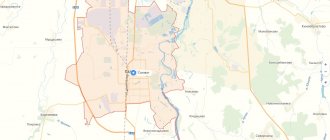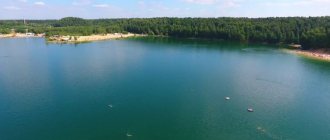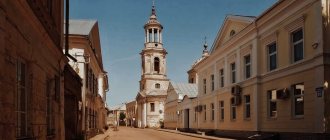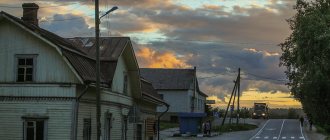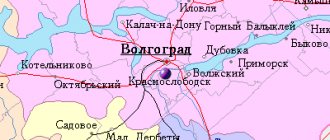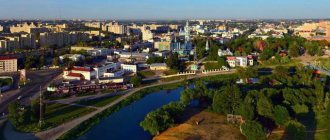How old will Sterlitamak be?
| Sterlitamak | |
| Based | 1735 |
| First mention | 1735 |
| Former names | Ashkadarsky Yam Ashkadar pier |
| City with | 1781 |
Interesting materials:
Who are the Yezidis and Kurds? Who were the Jacobins in France? Who are Haters and why? What are chordate examples? Who are the goats in the zone? Who are Hare Krishnas? Who are moderators and what do they do? Who are performing musicians? Who were the pioneers and what did they do? World History? Who are the rulers of the nomes?
Salavat
Background
An inscription on a stone near Victory Square in Salavat says that during the Peasant War (1773–1775), the cavalry of the national Bashkir hero Salavat Yulaev passed in the area of the future city. The cavalry was supposed to unite with the troops of Emelyan Pugachev.
On the site of the modern city there once stood small Bashkir villages: Artel Kuch, Karlykul, Kudakai and others. In the mid-40s of the twentieth century, the directorate of plant No. 18 was located in the city of Chernogorsk (located in Khakassia). Soon a decision was made to move the plant to Bashkiria. Here the hydrogenation of petroleum products was to be carried out, from which it was subsequently planned to obtain diesel fuel and gasoline. The site for the construction of the enterprise was approved in 1948. The enterprise was to be built in the area of the village of Big Allaguwat. It was planned to build a workers' village for 25 thousand inhabitants near the village of Musino.
Base
Salavat was founded on June 30, 1948 as a settlement called Novostroika. Future workers of petrochemical plant No. 18 (current name OJSC Gazprom neftekhim Salavat) were supposed to live in this village. Professional builders, as well as prisoners of war and prisoners, were sent to build the plant. In total, more than 25 thousand people came to the construction.
It is believed that the beginning of Salavat was laid by the city of Ishimbay, which was called the “second Baku”. Ishimbay provided considerable assistance in the construction of Salavat and the petrochemical enterprise. The first builders of Salavat often lived in the houses of Ishimbay residents. The village council of the new settlement was subordinate to the Ishimbay city council. The village of Salavat remained part of Ishimbay until 1954.
Despite the hospitality of the Ishimbay people, most of the first builders of Salavat were forced to live in tents. Then they moved to barracks on Stroiteley Street. Products were brought from Meleuz and Ishimbay. The future city was built in blocks. There was one bomb shelter for every four blocks in case of nuclear war. Each block implied the presence of socially significant facilities: shops, gyms, schools, kindergartens, etc. The main developer was the Salavatstroy trust.
At the end of the 40s, a bakery, a woodworking plant and a brick factory were built in Salavat, the tasks of which were to provide construction materials for the objects under construction. In the same years, construction of a hydrogenation plant and a gas plant began. RMZ (today – OJSC Salavatneftemash), thermal power plant, MCC, TSC, catalyst factory and many other auxiliary enterprises were built. Salavat's first school was located on Stroiteley Street in barracks No. 19. Later the school moved to a building located on B. Khmelnitsky Street. The petrochemical plant needed specialists. For their training, vocational school No. 1 was opened at the plant. In 1950, the first cafe, called “Blue Danube,” appeared in Salavat.
City status
On June 12, 1954, the village of Salavat received city status and its modern name. It is not difficult to guess that the name was given to it in honor of the national Bashkir hero. The construction of two-story brick houses began in the city, which progressed at such a fast pace that already in the mid-50s, 50 thousand people lived in Salavat. The city had everything necessary for a full life for its citizens: shops, kindergartens, hospitals, cinemas, schools, one of which was even intended for in-depth study of the English language. In 1956, a railway station was opened in the city. The railway line was built from Salavat to Tyulgan station. Later it was extended to Orenburg. Until now, the railway remains unelectrified and single-track. 1956 was also the year of the opening of the Salavat State Bashkir Drama Theater in the city.
Some buildings from the 40s and 50s have not survived to this day. This applies to barracks on Stroiteley, Severnaya and Pervomaiskaya streets. Prisoners of war and prisoners who participated in the construction of the city lived there. After the death of I. Stalin, all these people were sent home. The barracks were liquidated in the 70s. In their place, modern brick residential buildings were erected. Until the 90s, the construction of all Salavat buildings was carried out by the Salavatstroy trust.
Salavat in the 50-80s
At the end of the 50s, Salavat became the All-Union Komsomol shock construction site. Young people from all over the Soviet Union come to build a new city. In the 60s, the Salavat Komsomol was awarded the Order of the Red Banner of Labor. In 1955, a medical college opened in the city. In 1957, the Salavat Industrial College (today a college) was built in the city. Salavatnefteorgsintez becomes the city-forming enterprise of Salavat. The enterprise was constantly expanding, new facilities were put into operation. The main products were kerosene, gasoline and ethylene propylene. Salavat's main mode of transport was the tram, which took the company's employees to work. Over time, a tram line was built from the glass factory to the petrochemical plant.
The construction of a network of country health centers began back in the 50s. Numerous tourist centers, holiday homes, and pioneer camps were built not far from Salavat. Already in our time, the Children's health (formerly Pioneer) camp “Sputnik” received the title of the best corporate camp in the Russian Federation in 2005.
In the early 60s, residents of Salavat were given 6-acre plots of land for vegetable gardens. The vegetable gardens were located along the Belaya River. There were strict regulations for the construction of houses on these sites. At the same time, gasification was carried out in the city, and the Salavat Music College was built. In 1962, the Salavat technical glass plant was built in the city, which produced spatula fiberglass in rolls. In 1964, the Neftekhimik Palace of Culture was built in the city. In 1966, the construction of the Novo-Salavatskaya CHPP was completed. In the 60s, five-story brick houses (“Khrushchevka”) began to be built in the city. The first nine-story buildings appeared in Salavat in 1967. The Salavat glass factory continued to grow. New buildings are regularly commissioned. A special regime correctional colony for 1,200 people appeared in the city.
A pedestrian bridge was built across the Belaya River. Residents of the city have long used the left bank of the river as a vacation spot. However, due to the lack of a bridge across Belaya, it was necessary to ford. After the extraction of gravel for construction, deep quarries remained behind the river, which over time turned into lakes. In Salavat itself, a stadium named after the 50th anniversary of the October Revolution and a Park of Culture and Leisure appear. At the end of the 60s, the city was visited by the then famous hypnotist V. Messing.
In 1971, the Salavat Petrochemical Plant was awarded the Order of Lenin for the early implementation of the eighth five-year plan, the tasks of which included the development and creation of large-scale production. A considerable number of enterprises required a reservoir for storing production waste. In 1973, a nuclear explosion occurred in the vicinity of the city, after which an underground reservoir of the required size appeared. In the mid-70s, the Sports Palace, an obelisk on Victory Square, the Oktyabr cinema and a new bus station were built at the Neftekhimik stadium. In addition to four cinemas for adults, a children’s cinema “Orlyonok” was also built in Salavat on Ostrovsky Street. The Pioneer cinema, located on Pushkin Street, was demolished. A funeral home was built in its place. In addition to the barracks in which the first builders of the city lived, in the 70s the brick factory village, the villages of GATK-1 and GATK-2 were demolished.
The Stroitel and Almaz cultural centers were built in the city. Television broadcasting appeared on two channels. The Salavat optical-mechanical plant begins producing binoculars for various needs, including night vision models. The plant took part in the construction of a binoculars production plant in Zagorsk. With the onset of the food crisis in the city, food cards for cigarettes and vodka were introduced. The presence of vegetable gardens becomes a salvation from hunger for many residents of Salavat.
In the 80s, a network of water pipelines was built in the city, which was supposed to provide drinking water to the residents of Salavat. Water was supposed to be taken from sources near the village of Zirgan. Experts claimed that the water in these sources is so pure that it does not need disinfection. According to research results, the water that Salavat residents drink turned out to be mineral and can be used for medicinal purposes.
Shortly before the start of perestroika, the Zhelanny microdistrict and the southernmost street of Salavat, Leningradskaya, were built. One of the first periodicals in the city, the newspaper “Leninsky Put”, began to be called “Choice”. The publication of the newspaper “Unysh” was also launched, intended for free advertisements. The privatization of housing has begun in the city. The opportunity to buy and sell housing leads to the emergence of a real estate market in Salavat. Most of the city's enterprises were corporatized.
Current stage of development
After the severe economic crisis of the early 90s, a gradual revival of spiritual life began in Salavat. Despite economic difficulties, city residents are paying more and more attention to the construction of objects of religious significance in their city. From 1994 to 2002, the Church of the Holy Blessed Prince Dmitry Donskoy was built in Salavat. It took several more years to build the church's outbuildings. The Baptist Church was completed in 2000. From 1992 to 2004, construction of the Salavat Cathedral Mosque took place.
Residents of the city, as once in the 60s, were given free plots of land from four to six acres near the Sukhailya River (behind the 116th quarter). The building of the Komsomolets cinema today houses the city registry office. Previously, the registry office was located on Lenin Street. On Gorky Street, wooden houses were demolished, the residents of which were given housing in new modern buildings. In most houses on the central streets of the city, the first floors were converted into shops. An ice stadium with artificial turf was built in the city.
In 2000, the regulations on the coat of arms of the city of Salavat were approved. The authors of the coat of arms were Rivinir Timershaehovich Faezov and Alexander Viktorovich Lavrukhin. The monument to Salavat Yulaev, located on Stroiteley Street, was moved to Yulaev Street, where the monument was installed on a higher pedestal. In place of the monument to the national Bashkir hero, a monument to Pushkin was erected. The new memorial complex “Land of Yurmaty” was opened in 2003. The complex was built on the site of villages that fell into the area of the petrochemical plant and were subsequently demolished.
In 2008, Russia again experienced a financial crisis. Demand for the products of Salavat enterprises is sharply declining. This leads to lower wages and increased unemployment in the city. The workers of OJSC Salavatnefteorgsintez suffered the most. The development of the city continued after the end of the crisis. Fifteen kilometers from Salavat, a ski slope with recreation buildings and lifts was built. In the village of Musino, the Intercession-Ennatsky monastery was built. In 2009, the city opened the Salavat Museum of Local Lore, located in the building of the former Rodina cinema.
Modern Salavat is the third largest city in the Republic of Bashkortostan. The city continues to grow: housing construction is underway in the southern part of Salavat. However, the population growth of Salavat stopped in the 2000s. This is explained by the demographic crisis in the country, as well as the outflow of the population to other regions of the Russian Federation.
In 2010, the Sports Palace at the Neftekhimik stadium was demolished. A multifunctional sports complex was built in its place. The Eternal Flame memorial complex was reconstructed on Yulaev Street. The complex included a memorial pylon in honor of the Salavat soldiers who died during the fighting in Chechnya, Afghanistan and other hot spots. One of the city-forming enterprises still remains OJSC Salavatnefteorgsintez. The enterprise was renamed OJSC Gazprom neftekhim Salavat. This is one of the first enterprises in the republic that managed to overcome the consequences of the 2008 economic crisis in 2011.
There is a program for relocation from dilapidated housing in Salavat. Some residents of the city, whose housing was considered dilapidated, have already been moved to new apartments. At one time, houses on Pervomaiskaya, B. Khmelnitsky, Gorky, Rechnaya and Stroiteley streets were declared unsuitable for living. In 2012, the city opened to the public the Culture and Recreation Park, which had been under reconstruction for a long time.
Numbers
According to statistics, in 2022 more than 30% of the population live in the capital of Bashkortostan - the city of Ufa, as well as in the Ufa municipal district. Significant rural population density is observed in such municipalities as Ufa (37 people/km²), Karmaskalinsky (30 people/km²), Chishminsky (29 people/km²) and Tuymazinsky (27 people/km²). The Zilairsky, Beloretsky and Burzyansky districts are less densely populated (3-4 people/km²).
Population of cities in Bashkiria as of January 1, 2022
| Total population, people | |
| TOTAL FOR THE REPUBLIC | 4038151 |
| Urban districts | 1978359 |
| Ufa | 1140273 |
| Sterlitamak | 276394 |
| Salavat | 150500 |
| Neftekamsk | 142255 |
| Oktyabrsky | 114100 |
| Kumertau | 63308 |
| Sibay | 61817 |
| Mezhgorye | 15493 |
| Agidel | 14219 |
| Municipal districts | 2059792 |
| Tuymazinsky | 130977 |
| Beloretsky | 99698 |
| Belebeevsky | 95653 |
| Ufa | 99567 |
| Ishimbaysky | 85939 |
| Meleuzovsky | 81069 |
Working population
According to statistics for 2022, the Republic of Bashkortostan has more than 2.3 million working-age population. Moreover, there are more working women than men.
As of January 1 of last year, the demographic burden throughout the country was 818 people per 1,000 people of working age, including 340 children and adolescents and 478 pensioners. In Bashkiria, these indicators showed the following: the total demographic burden is 840, of which 376 are children and teenagers and 464 people over working age.
As for the age composition of the population of Bashkiria, as of January 1, 2022, the average was 39.2 years, of which men – 36.8 years, women – 41.4 years.
Ufa is the most populated city in Bashkiria
The capital of the Republic of Bashkortostan is one of the ten most comfortable and promising cities in our country. Ufa is the most spacious metropolis. For each resident there is almost 700 sq. m of space. The population density here is significantly higher than the average for the entire region. By the way, the word “Ufa” in Bashkir spelling resembles three circles crossed out by lines and looks like this ӨФӨ. Because of the appearance of the letters, the local train station and airport were jokingly called “Three Screws” or “Three Pills.”
At the end of 2022, the capital of Bashkiria ranked eighth in the population ranking among 13 Russian cities with a population of over a million.
Ufa twice took second place in the nomination for the title of the best Russian city for business.
